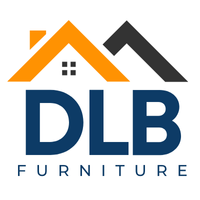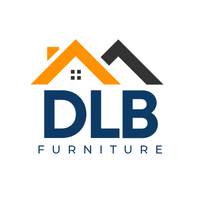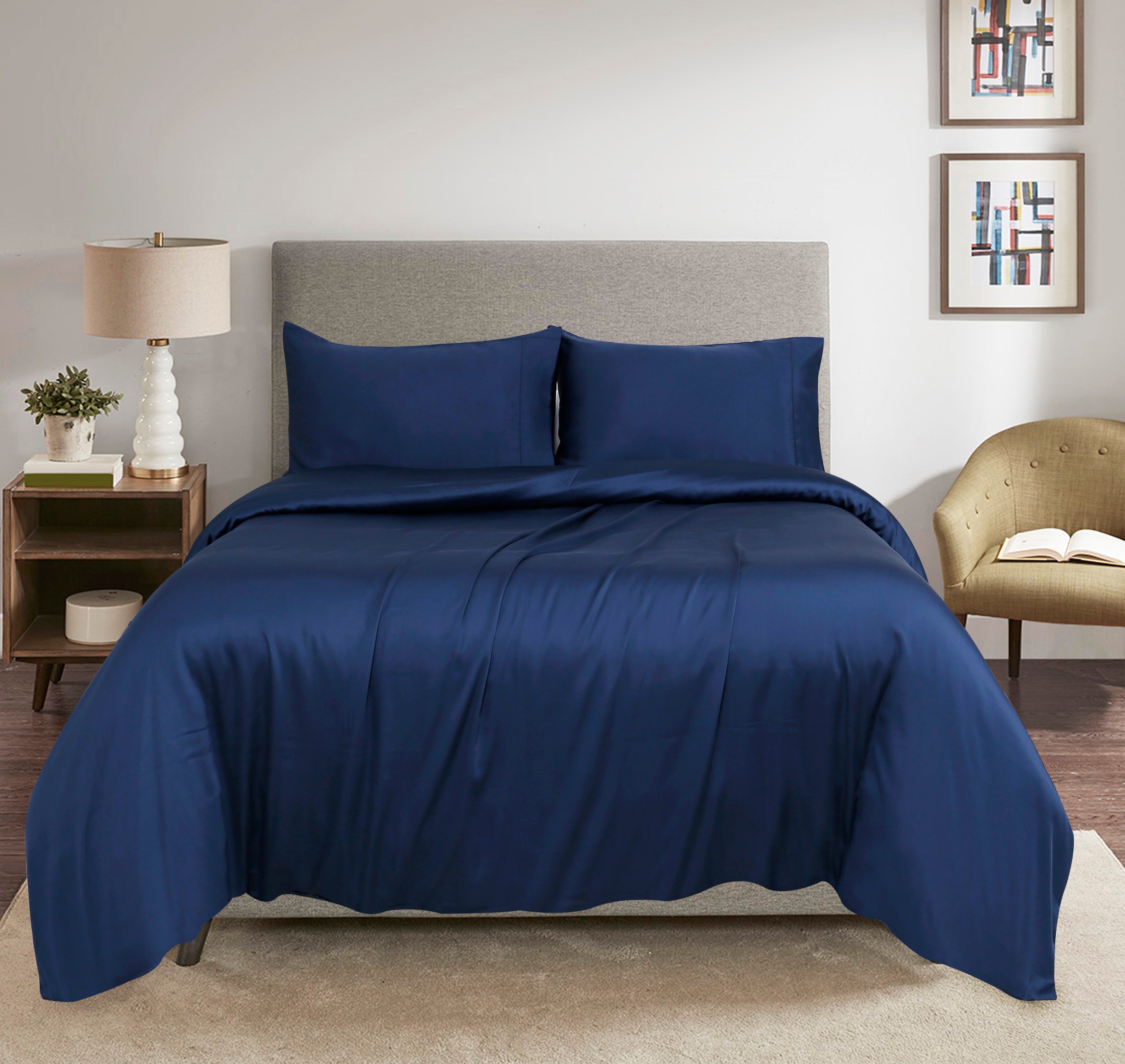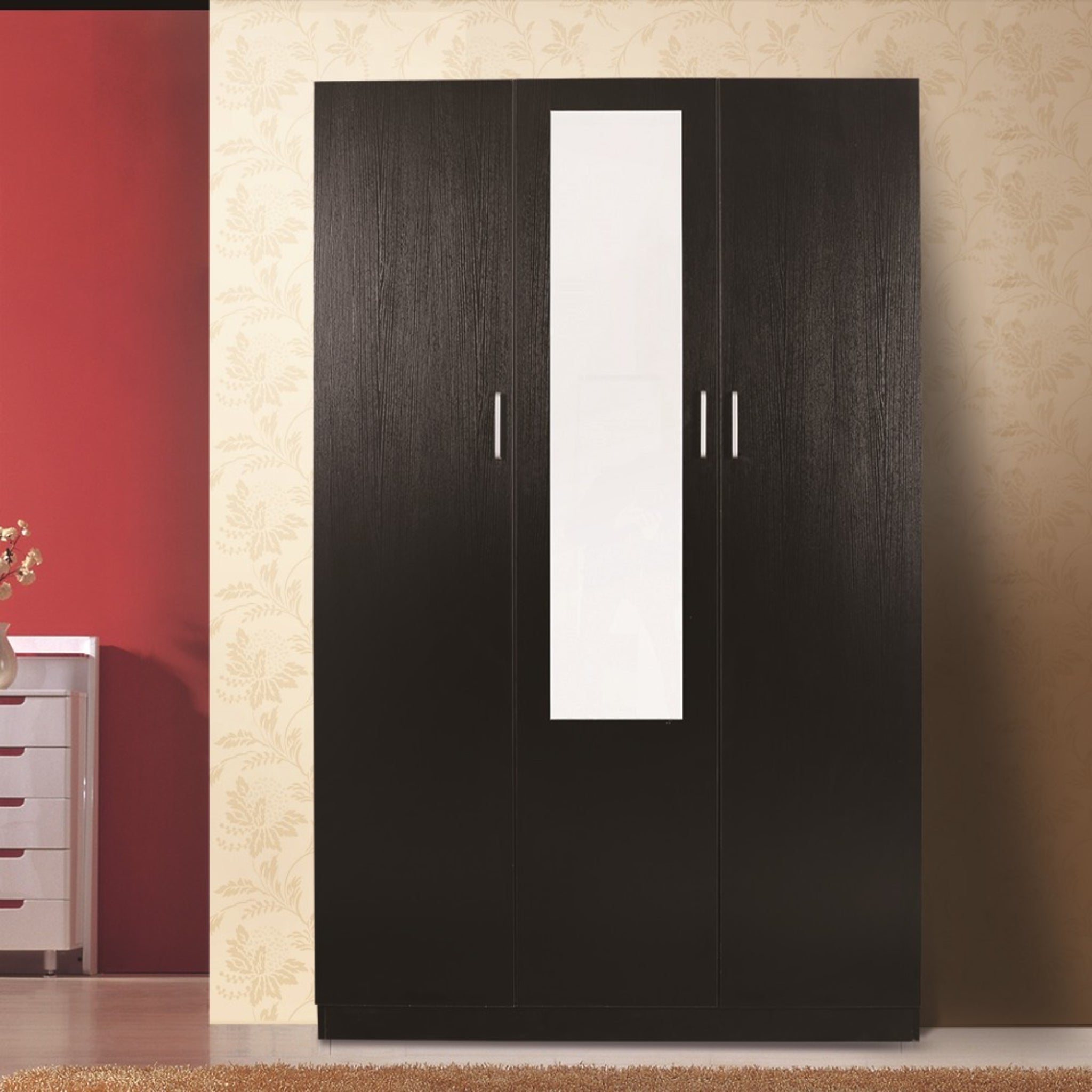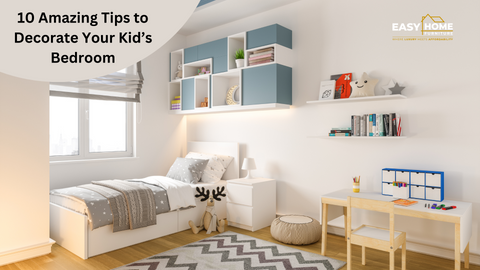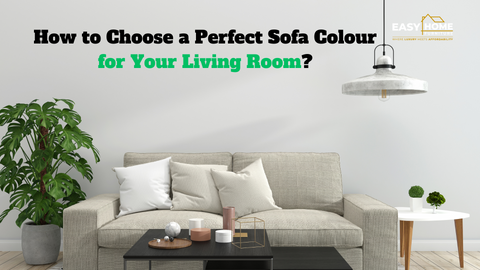For most of us Aussies working a desk job, the right office chair is more than just a place to park yourself—it's a non-negotiable tool for getting the job done. The best ergonomic office chairs in Australia, like those from big names such as Herman Miller, Steelcase, and Ergohuman, are genuine investments in your health and ability to stay productive.
Think of it this way: a good chair helps you avoid burnout and keeps your body in good nick, letting you bring your A-game to work every single day.
Why the Right Ergonomic Chair Is a Career Investment
It's easy to see an ergonomic chair as just another piece of office furniture, but that’s a huge mistake. A better way to think about it is like performance gear for your job. A professional athlete wouldn’t show up to compete in a pair of thongs, so why should a professional who spends their day at a desk put up with a chair that causes pain and distraction?
This goes way beyond just preventing a sore back. A proper ergonomic setup has a direct line to your ability to focus for hours on end. When your body is properly supported, you stop fidgeting, shifting around to get comfortable, or feeling that dull ache creep into your lower back. All that mental energy you were wasting is suddenly free to tackle complex problems, brainstorm creative ideas, and actually meet your deadlines.
The True Cost of a Bad Chair
The hidden costs of a bad chair and poor posture are massive. They show up as brain fog, feeling knackered by 3 pm, and even taking more sick days for back, neck, and shoulder pain. Investing in a quality ergonomic chair is one of the smartest, most proactive things you can do to protect your productivity and your health.
If you're curious about the specifics, it's worth understanding why your office chair might be holding you back and how it impacts far more than just your spine.
This isn't just a niche idea anymore; it's a mainstream shift. The Australian office furniture market was valued at a whopping USD 1.8 billion in 2024 and is expected to hit USD 2.5 billion by 2033. That growth is almost entirely fuelled by people and companies wanting proper ergonomic gear because they finally get how important workplace wellness is.
Introducing Active Sitting for Better Energy
The best modern ergonomic chairs do more than just hold you in one "perfect" posture. They're designed around a concept called active sitting. No, this doesn't mean you'll be doing star jumps at your desk. It’s all about encouraging tiny, natural movements throughout the day.
An active sitting chair is designed to move with you. It subtly shifts as you lean, reach, and think, which keeps your blood flowing, engages your core muscles, and stops you from getting stiff and sore. The result? You feel more energised and focused all day long.
This kind of dynamic support adapts to whatever you're doing, whether you're hunched over the keyboard typing furiously or leaning back to ponder a tricky problem. By choosing the right chair, you're not just buying a piece of furniture; you're making a serious investment in your daily performance and your long-term health.
What Really Makes an Office Chair "Ergonomic"?

The word "ergonomic" gets thrown around a lot these days. It’s often slapped onto any office chair with a bit of extra padding, but that’s not the whole story. A truly ergonomic chair is a sophisticated piece of equipment, engineered to fit your body, not force you to fit it. It's less about just sitting and more about creating a supportive partnership that keeps you healthy and focused.
Getting to know the key features is essential. This isn't just about ticking boxes on a feature list; it's about understanding why each adjustment exists and how it makes a real difference to your comfort and wellbeing throughout the workday.
Let’s break down the absolute must-haves.
Lumbar Support: Your Spine’s Best Friend
If there's one feature that stands above the rest, it’s adjustable lumbar support. Your lower back has a natural inward curve—think of it as a gentle ‘S’ shape. When you sit in a chair with a flat back, you're forcing that curve to straighten out. This puts a huge amount of strain on your spinal discs and is a direct cause of that nagging lower back pain so many of us know too well.
Proper lumbar support acts like a gentle, supportive hand on your lower back, encouraging your spine to hold its natural posture. The key here is adjustability. You need to be able to move the support up or down and, on better chairs, change its depth. This level of customisation is what separates a genuine ergonomic tool from a marketing gimmick.
Seat Depth and the Two-Finger Rule
Ever had that annoying feeling of a chair edge digging into the back of your knees? That’s a classic sign of poor seat depth. If the seat is too long for your legs, it can press on nerves and cut off circulation. If it’s too short, your thighs are left dangling without proper support.
Seat depth adjustment is the solution. It lets you slide the seat pan forward or backward to get the fit just right for your leg length.
The Two-Finger Rule: A great way to check this is to sit all the way back in the chair. You should be able to comfortably fit two or three fingers between the front edge of the seat and the back of your knees. That little gap is crucial for maintaining healthy blood flow.
Armrests: From Basic Support to 4D Precision
Armrests are more than just a place to park your elbows. They play a huge role in taking the load off your neck and shoulders. When your arms are properly supported, your shoulder muscles can finally relax instead of working all day to hold themselves up.
The adjustability of armrests is often described in "dimensions" (1D, 2D, 3D, 4D). Here’s a quick rundown:
- 1D: Height adjustment only (up and down).
- 2D: Adds width adjustment (in and out).
- 3D: Adds the ability to slide the arm pads forwards and backwards.
- 4D: Adds a pivot function, letting you angle the pads inwards or outwards.
For most of us, 2D or 3D armrests offer all the flexibility needed to find a supportive sweet spot. 4D is more of a premium feature, perfect for people who need pinpoint positioning for specific tasks. Even a good quality student ergonomic office chair will usually have adjustable arms, which just goes to show how important they are.
Tilt Control and Why You Need to Move
Sitting still all day is the enemy. A great chair should encourage subtle movement. The feature to look for here is a synchronous tilt mechanism. This means that when you lean back, the backrest and the seat recline together but at a different ratio (the backrest tilts more than the seat). This action opens up your hip angle, which is fantastic for circulation and relieving pressure on your spine.
Working hand-in-hand with this is tilt tension control. It’s usually a large knob under your seat that lets you decide how much effort it takes to lean back. When you get the tension right, you can recline smoothly with just a gentle push, but you'll still feel completely supported. It turns your chair from a static object into a dynamic tool that responds to your body's every move.
How to Perfectly Adjust Your Chair for Your Body
So, you've just unboxed your brand-new ergonomic chair. Staring at all those levers, knobs, and dials can feel a bit like sitting in the cockpit of a fighter jet for the first time. It’s tempting to just leave everything on the factory settings and hope for the best.
But if you do that, you're missing the entire point. You've invested in a sophisticated piece of equipment designed to mould to you. Think of it like a finely tuned instrument; a guitar doesn't sound right until every string is tightened to the perfect pitch. Your chair is no different—it needs to be adjusted to your body to provide the support you paid for.
Let's run through the right way to set it up, creating that perfect harmony between you, your chair, and your desk.
Starting with Your Foundation: Seat Height
Everything starts from the ground up. The first, and most important, adjustment you need to make is the seat height. This single setting dictates your entire relationship with your desk and the floor.
Your goal is simple: get your feet flat on the floor with your knees bent at roughly a 90-degree angle. Your thighs should be more or less parallel to the ground. If the seat is too high, you'll notice uncomfortable pressure building up behind your thighs. If it's too low, your knees will be pushed up, creating strain. Nail this first, and the rest will fall into place.
This infographic breaks down the core principles for a healthy, supportive posture.

As you can see, getting your knees, back, and arms aligned in the right sequence is what creates a stable and pain-free setup.
Dialing In Your Back and Arm Support
With your feet firmly planted, it's time to focus on your back. Adjust the backrest so you can lean back into a comfortable, slightly reclined posture. An angle of about 100 to 110 degrees is the sweet spot for taking pressure off your spinal discs while you work.
Next, find the lumbar support adjustment. You want it to nestle perfectly into the natural curve of your lower back. It should feel like a gentle, firm cradle—supportive, but definitely not pushy.
Now for the armrests. Bring them up or down so that your shoulders can completely relax. When you type, your forearms should be level with your desk, and your elbows should form a nice, open 90-degree angle. This simple tweak stops you from hunching your shoulders up around your ears, which is a major culprit for neck and shoulder pain.
Key Takeaway: There's a proper sequence to this. Always start with your feet on the floor and work your way up: seat height, then backrest and lumbar, and finally, armrests. Adjusting things out of order will throw your whole posture out of whack.
Learning to use these adjustments is the key to unlocking the chair's full potential. The best ergonomic office chairs Australia offers, like this highly customisable ergonomic office chair with multiple adjustments, are built precisely for this level of fine-tuning. A quick ten-minute setup session is all it takes to transform your chair from just a place to sit into a genuine tool for comfort and focus.
Choosing the Right Material for the Australian Climate
The material of your office chair is about so much more than just aesthetics. Here in Australia, with our famously wild climate, it’s a crucial factor for day-to-day comfort. What feels cosy during a chilly Melbourne winter can quickly turn into a sticky, uncomfortable mess in a humid Brisbane summer.
So, when you're looking at chairs, you'll generally come across three main players: mesh, fabric, and leather. Each has its own distinct personality, with pros and cons that can make or break your workday depending on your office environment and what you personally find comfortable. Let's break them down.
The Case for Breathable Mesh
There’s a very good reason mesh chairs have become so incredibly popular across Australia: airflow. It's as simple as that. A well-designed mesh backrest lets air circulate, which is an absolute game-changer in warmer regions or any office that gets a bit stuffy.
This constant ventilation helps stop that dreaded heat and sweat build-up, keeping you cool and focused during long stretches at your desk.
The trade-off? Some people find that tensioned mesh doesn't have the same "sink-in" feeling as a cushioned seat. While modern, high-quality mesh provides fantastic, flexible support, it's a firmer experience than traditional upholstery.
The Comfort and Style of Fabric
Fabric is the classic, reliable choice. It gives you a softer, more cushioned feel right from the get-go and opens up a huge world of colours and textures. This makes it super easy to find something that perfectly matches your workspace decor.
In the cooler southern states, that slightly warmer feel of fabric can be a real plus. The biggest downside, however, is upkeep. Fabric is more prone to soaking up spills and trapping dust, so it needs a bit more care to stay looking its best. It also doesn't breathe like mesh, which could be a dealbreaker if you work somewhere hot without reliable air-con.
Choosing the right material is so important that comfortable seating now makes up about 34% of the entire Australian office furniture market. With over 60% of Aussie office workers experiencing musculoskeletal issues, the demand for chairs that are both supportive and comfortable for our climate is booming. You can explore more data on Australian office furniture trends at Mordor Intelligence.
The Premium Feel of Leather
Nothing says "executive" quite like a leather chair. It offers a premium look and feel that’s tough to replicate, and it's famous for its durability. Being easy to wipe clean makes it a practical, long-lasting investment that often looks even better as it ages.
But for the Australian climate, leather comes with two big warnings. First, it’s the least breathable material of the lot, which can get seriously uncomfortable when the temperature soars. Second, it carries a significantly higher price tag.
Before you fall in love with a particular material, it’s worth thinking about the bigger picture. We go into more detail on how your office environment plays a role in our guide on choosing the best material for your furniture.
What to Expect at Different Price Points

When you start shopping for an ergonomic office chair in Australia, the price tags can be all over the place. You'll find some for under a hundred dollars and others pushing well past the two-thousand-dollar mark.
This huge gap isn’t just about a fancy brand name. The price is a direct reflection of the chair's build quality, how finely you can tune its adjustments, and ultimately, how long it's designed to last. To navigate this, let's break the market down into three main price brackets. Knowing what you get for your money at each level is the secret to finding the right fit for your body and your budget.
The Entry-Level Tier: Under $400
Think of chairs in this price range as your first step into proper ergonomics. They won’t have the sophisticated, responsive mechanisms of their pricier cousins, but they will cover the absolute essentials. You should be looking for basic seat height adjustment, a simple backrest tilt, and some form of lumbar support—even if it's a fixed curve in the backrest.
The materials are generally standard fabric or a basic mesh, and you'll find the warranties are shorter, usually around 1-3 years. While a massive improvement over a dining chair, these are best for shorter work sessions or for those lucky enough not to have any existing back issues.
The Mid-Range Tier: $400 to $900
For most professionals, this is the sweet spot where value and performance meet. Chairs in this bracket introduce the features that genuinely make a difference to all-day comfort and support. You’re moving beyond the basics into more refined adjustability.
Expect to find features like:
- Seat depth adjustment (seat slide)
- Properly adjustable lumbar support (up/down and sometimes in/out)
- 2D or 3D adjustable armrests for better shoulder and neck support
- Synchronous tilt mechanisms that move the seat and back in a coordinated, supportive way
The materials get a serious upgrade too, with more breathable, high-grade mesh and hard-wearing fabrics. Warranties also get much better, typically covering you for 5 to 10 years. A chair from this range is a proper tool designed for your long-term health and productivity.
This part of the market is booming, and for good reason. The global ergonomic chair market was valued at USD 12.08 billion in 2024, and it's only getting bigger as more Aussie businesses realise the importance of employee wellbeing.
The Premium Tier: Above $900
This is the top end of town, where chairs are born from years of biomechanical research and material science. These models offer the absolute best in ergonomic design, with advanced dynamic mechanisms that often adapt to your posture automatically, without you even touching a lever.
Premium chairs are built with patented materials, feature fully adjustable 4D armrests, and are engineered to handle constant, heavy use for more than a decade. The warranties reflect this, often lasting for 10-12 years or more and covering almost every part of the chair.
Think of it as an investment, similar to buying a high-quality mattress. It’s a piece of equipment designed to support you for a huge chunk of your day, for years on end. Getting that support right is critical, a principle we also cover in our guide on how to choose the right mattress for a good night's sleep.
Buying Smart in Australia: Warranty, Delivery, and Local Know-How

Choosing the right ergonomic chair is only half the battle here in Australia. You also need to think about the practical side of things—logistics, warranties, and local support. It’s easy to be drawn in by a slick-looking deal from an overseas store, but that bargain can turn into a massive headache when you need a simple repair.
Before you click "buy," find out where the warranty is serviced. A chair with a 10-year warranty is fantastic, but not if you have to ship a broken part back to Europe or the US. Look for brands that have a proper Australian presence. Local support is what turns a good chair into a great long-term investment.
Delivery is another classic Aussie hurdle. Free shipping to metro Sydney or Melbourne is common, but those costs can rocket up once you head into regional areas. Always double-check the final delivery fee at checkout to avoid a nasty surprise. And don't forget to ask how it arrives—wrestling with a flat-packed chair and a confusing manual isn't everyone's idea of a good time.
The AFRDI Stamp of Approval
As you're browsing, keep an eye out for one very important certification: AFRDI.
AFRDI stands for the Australasian Furnishing Research and Development Institute. It's an independent, not-for-profit organisation that puts furniture through its paces, testing for safety, durability, and ergonomic performance against tough Australian standards.
Seeing that AFRDI Blue Tick on a chair is your guarantee that it's built to withstand the rigours of daily office use. It’s a sign of quality that separates the serious contenders from the pretenders.
Nothing Beats a Test Drive
Ultimately, you can read all the reviews in the world, but you’ll learn more in ten minutes of actually sitting in a chair than in ten hours of online research.
If you can, get yourself to a local showroom and try a few different models. Feel the difference between mesh and fabric, test how intuitive the adjustments are, and see if the size and shape really suit your body. This hands-on approach is the surest way to find your perfect match. The feel of the material is a huge part of this, a principle we explore in our guide on choosing the best material for sofas, as comfort is key for any piece of furniture you use daily.
Got Questions? We've Got Answers
As we get to the end of this guide, let's go over a few of the most common questions we hear from people looking for the right ergonomic chair in Australia. Think of this as a final check-in to clear up any lingering doubts before you make your choice.
How Long Should a Good Ergonomic Office Chair Last?
Think of a great ergonomic chair as a long-term investment in your well-being, not just a piece of furniture. In Australia, most quality chairs from reputable brands come with warranties anywhere from 5 to 12 years. That alone tells you a lot about their expected lifespan.
Of course, how long it actually lasts comes down to the quality of the bits and pieces that do all the heavy lifting—the gas lift, the castors, and the main mechanism. With a bit of care, a well-built chair can easily see you through a decade of work. When you look at it that way, the higher upfront cost starts to look a lot more sensible than buying and replacing a cheap chair every couple of years.
Is a Headrest Really Necessary?
Honestly, for typical day-to-day typing and desk work, a headrest isn't a must-have. When you’re sitting upright, your head should be naturally balanced over your spine without needing extra support.
But it’s a completely different story if you’re someone who likes to recline.
If you lean back to think, read documents, or take phone calls, a headrest becomes a game-changer. It provides that crucial support for your head and neck, stopping strain before it starts. The real question to ask yourself is: "How do I work?" If reclining is part of your daily rhythm, an adjustable headrest is definitely worth it.
What Is AFRDI Certification and Why Should I Care?
You’ll often see an "AFRDI" certification mentioned, and it’s a big deal here in Australia. It stands for the Australasian Furnishing Research and Development Institute.
Basically, if a chair has an AFRDI Blue Tick, it means it’s been put through the wringer and passed a whole series of tough Australian standards for safety, stability, durability, and strength. It’s an independent stamp of approval that tells you the chair is built for the long haul, especially in a commercial setting. For anyone buying a chair in Australia, spotting that certification is an easy way to get some peace of mind.
At DLB Furniture, we believe the right chair is the foundation of a productive workspace. Explore our curated collection of ergonomic office chairs designed for comfort and support. Find your perfect fit at DLB Furniture.
